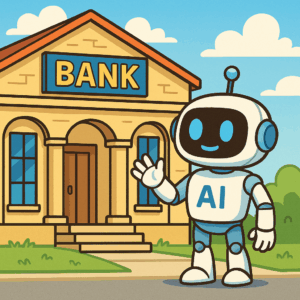By: Andrew Ly for HR Morning, Photo by Fabian Irsara on Unsplash
A typical day in HR is… anything but typical. Whether you’re dealing with an employee suddenly leaving or your CEO demanding results, you’re constantly on the move and putting out new fires.
You’re busy, to say the least.
And on top of it all, you still have to answer questions about payroll and keep up with compliance reporting. That leaves little room for higher-level responsibilities like scouting for new talent or developing strategies to motivate employees.
No one needs to tell you that your time and energy are valuable. And your day shouldn’t be consumed with administrative or routine tasks. Whether you’re doing everything on pen and paper or using specialized software for recruiting or training, it’s time to consider a change.
If you haven’t heard about HRMS, now is the time to check out the technology that can streamline HR and help you take back your day.
What is HRMS?
A human resource management system (HRMS) integrates all of the core and strategic HR functions into one solution, improves recruiting, offers a self-service portal, automates data entry and administrative processes, streamlines information in a central database, reduces payroll and compliance errors, and facilitates data-driven strategies.
How is HRMS different from HRIS and HCM?
HRMS, HRIS and HCM are various acronyms used for comprehensive HR technology. It’s easy to get confused, because these terms are often used inconsistently and interchangeably. That said, it’s still a good idea to know how they are generally defined. Here’s a breakdown of which modules are included in each one:
- Human resource information system (HRIS) – applicant tracking, employee self-service portal, central database, analytics, training, compensation and benefits
- Human capital management (HCM) – HRIS modules, plus onboarding and talent management
- Human resource management system (HRMS) – HCM modules, plus payroll, time and attendance, and performance tracking
HRMS has the most modules of any HR technology, but typically has fewer customizations and advanced features compared to specialized software that focuses on an individual module. What makes HRMS preferable, however, is that it’s an integrated system that can follow employees end-to-end from recruiting to exit interviews.
Consider these seven ways that HRMS can transform your HR department.
1. Manage the hiring process more efficiently
We’ve previously written about the insights that applicant tracking systems (ATS) can provide, including:
- Finding and solving hiring bottlenecks
- Discovering which hiring managers need help
- Tracking your hiring team’s efficiency and effectiveness
- Determining your best sources for hires
An HRMS solution won’t have as many specialized features as a dedicated ATS software, but it will have the benefit of retaining applicant information if they are hired and onboarded. You’ll also be able to analyze this data and generate reports on the types of candidates that ultimately become successful employees.
2. Engage employees with onboarding and training
Once you’ve hired the right candidate, it will be important for you to keep them engaged from the beginning. Employees that go through a structured onboarding program are 58% more likely to stay with an organization after three years.
With HRMS, onboarding can start even before the new employee reaches the office. Employees can sign administrative documents electronically, catch up on company news and business goals, and join virtual social networks of colleagues. On their first day, they’ll have more time to tour the facility, set up their equipment and hit the ground running.
HRMS solutions can also boost engagement through continuing education. For example, millennial employees ranked training and development as the most important benefit of working for a company, higher than cash bonuses, free health care and a pension.
Small businesses may find hiring speakers or holding physical classes too expensive. HRMS offers a cost-effective alternative with e-learning modules to help employees improve their skills and performance at their own pace.
This type of professional development not only promotes employee engagement, but also prepares future leaders within your company who might otherwise leave.
3. Save time with a self-service portal
Employees often have specific questions about their salaries, benefits and time off. Answering these vital yet routine questions, however, can take up a huge chunk of your day.
With a self-service portal, employees can access their information any time, from a remote site or on their mobile phone. The portal generally has a user-friendly interface and allows employees to:
- View their salaries, benefits, 401K and taxes,
- Update their employment and contact details,
- Enter time and attendance,
- Submit expense and reimbursement forms, and
- Request paid time off and sick leave.
Managers can also approve and decline employee time off requests without your intervention.
In the end, your employees will be able to answer many of their own questions at their own convenience and you’ll have to do less data entry, giving you back valuable time to spend on more meaningful activities.
4. Reduce business errors with automated processes and a central database
You know how important it is to maintain accurate payroll and compliance records. Any mistake is not just a headache but also a potential lawsuit.
HRMS automates these processes, so that you can worry less about costly errors. It can calculate wages and salaries, deduct the correct amount of taxes and benefits, and print checks or execute direct deposits. It can also schedule reminders when compliance forms are due, require employees to digitally accept communications and deliver compliance training.
In addition, the system will consolidate information into a central database. You won’t have to go searching through multiple filing cabinets, spreadsheets or emails for various details about a single employee. This not only saves you time and energy, but can also keep you organized and reduce errors in transferring information.
5. Accelerate employee performance
Employees are more productive when they feel that business objectives are aligned with their skill sets and accomplishments are properly rewarded. Yet it may not be clear to you how employees are doing in their roles and whether or not they are succeeding.
HRMS solutions empower employees to take performance into their own hands. They can:
- Monitor their own progress,
- Seek help and make improvements between scheduled reviews, and
- Develop their future goals.
In response, managers can:
- Quantify employee performance,
- Provide more relevant feedback,
- Select appropriate assignments,
- Recognize achievements, and
- Create succession plans to promote exceptional employees.
Overall, everyone will have a better understanding of how employees are doing at their jobs. Managers can acknowledge progress and employees will have a clearer path going forward.
6. Understand why employees leave
When an employee leaves, you conduct an exit interview to understand why. The information you get, however, may not always be accurate. Perhaps there are strong emotions surrounding the departure or the employee doesn’t feel comfortable being honest in person.
HRMS solutions can communicate with employees even after they leave. Because they’ve had time to understand their reasoning and now have the space to be direct, their insight can be valuable. This information can be combined with other metrics previously collected by the software such as demographics, performance, promotion wait time and compensation ratio to create a more holistic analysis of employee turnover.
Fully examining why an employee leaves is important because it helps to develop a strategy for reducing turnover in the future. Without proper data, you’re left to wonder if your assessments are accurate.
7. Support your decisions with evidence
Businesses are increasingly looking to HR for more data-driven initiatives and strategies. Whether its recruiting more efficiently, increasing engagement or reducing turnover, senior management wants your decisions to be backed up with quantifiable metrics.
HRMS not only records information but can also generate reports and analyze real-time key performance indicators, such as duration-in-position or time-to-achieve goals. This data can help you develop evidence-based strategies that are more likely to get buy-in from senior management.
Some HRMS solutions even offer predictive analytics that can give you more certainty in your workforce decisions and insights for future recruitment and retention strategies.
Still undecided on HRMS?
With a self-service portal, automated processes and a central database, HRMS solutions can reduce the amount of time you spend on labor-intensive tasks and transform your HR department.
You’ll now be free to focus on data-driven strategy and higher-level initiatives that will ultimately benefit your greatest resource–your employees.
If you’re in the market for an HRMS solution, it’s important to do more research on implementation, cost, integration and training. For more info, here’s our definitive guide to HRMS.




